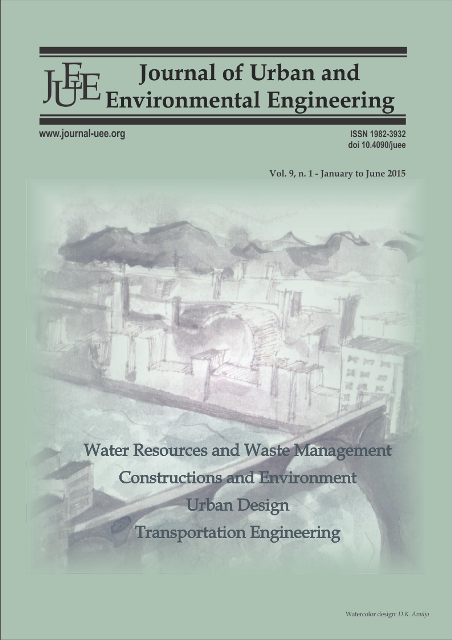MODELING OF MIXED LIQUOR VOLATILE SUSPENDED SOLIDS AND PERFORMANCE EVALUATION FOR A SEQUENCING BATCH REACTOR
DOI:
https://doi.org/10.4090/juee.2015.v9n1.54-65Keywords:
Performance evaluation, artificial neural network, MLVSS, biokinetic coefficientsAbstract
This study examined carbon, nitrogen and phosphorous removal from municipal wastewater in a sequencing batch reactor and biokinetic coefficients were evaluated according to results of BOD and COD. Furthermore, the MLVSS in the aeration reactor was modeled by using multilayer perceptron and radial basis function artificial neural networks (MLPANN and RBFANN). The experiments were performed so that the cell retention time, filling time and intensity of aeration were (5, 10 and 15 d), (1, 2 and 3 h) and (weak, medium and strong) respectively. The result indicated that with cell retention time of 15 d, filling time of 1 h, aeration time of 6 h and settling time of 3 h the HRT is optimized at 10 h. The BOD5, COD, TP, TN and removal efficiencies were 97.13%, 94.58%, 94.27%, 89.7% and 92.75% respectively. The yield coefficient (Y), decay coefficient (Kd), maximum specific growth rate (K) and saturation constant (Ks) were 6.22 mgVSS/mgCOD, 0.002 1/d, 0.029 1/d and 20 mg COD/L according to COD experimental data. The values of the biokinetic coefficients were found to be as follows: Y = 10.45 mgVSS/mgBOD, Kd = 0.01 1/d, 0.014 1/d and 3.38 mgBOD/L according to BOD5 experimental data. The training procedures for simulation of MLVSS were highly collaborated for both RBFANN and MLPANN. The train and test models for both MLPANN and RBFANN demonstrated perfectly matched results between the experimental and the simulated values of MLVSS. The values of RMSE for train and test (verification) models obtained by MLPANN were 31.82 and 40.25 mg/L respectively, and the value of R2 was 0.99 for both models. The values of RMSE for train and test models obtained by MLPANN were 69.04 and 43.87 mg/L respectively, and the value of R2 was 0.99 for both models. It was observed that the MLPANN has stronger approximation and generalization ability than the RBFANN with regard to our experimental data for MLVSS.Downloads
Download data is not yet available.
Downloads
Published
2015-12-27
Issue
Section
Articles




